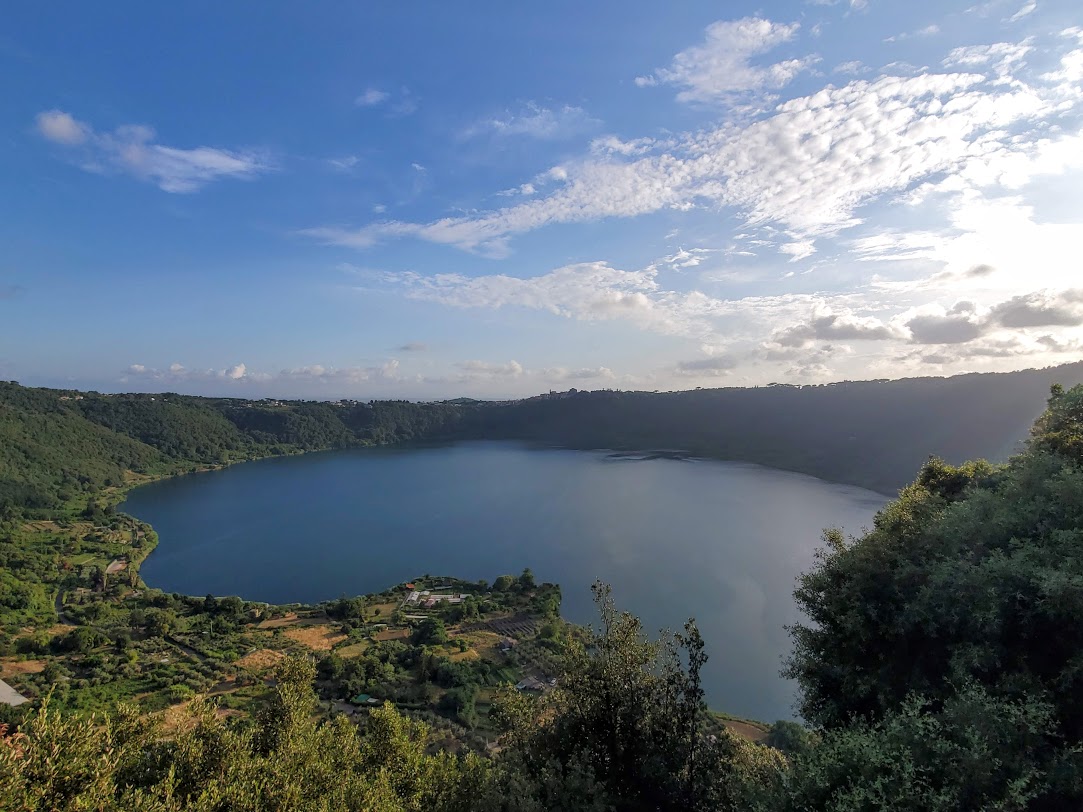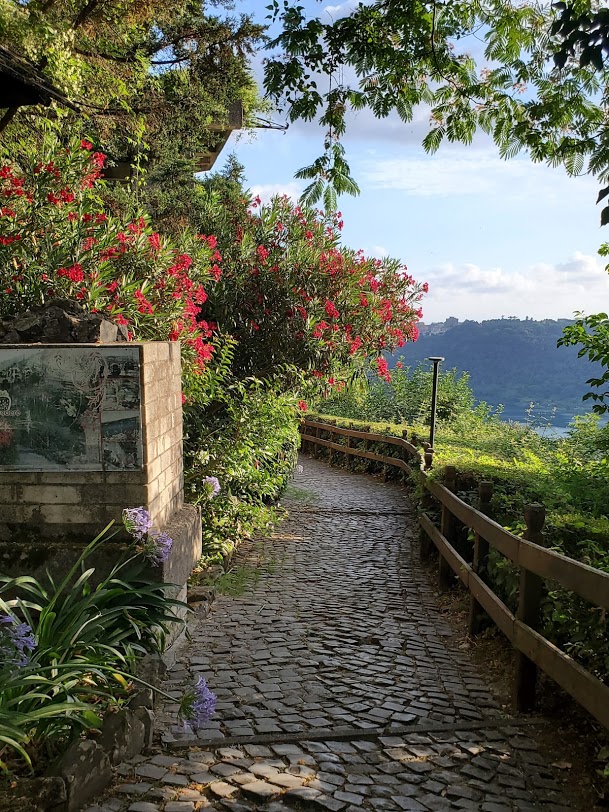NEMI, Italy – Earlier this month, the hilltop town of Nemi, Italy, opened a nature trail to small cave that served as a hermitage site for local monks. But the trail bears the name of Saint Michael the Archangel, raising questions about the name and its relation to the famous Temple of Diana on the shores of the eponymous lake.
The town of Nemi is famous for being the site of the Temple of Diana Nemorensis, whose cult was immortalized by James George Frazer in The Golden Bough and attested in Roman antiquity by the Roman poet and historian Livy.
The Temple of Diana was constructed when the Roman king Servius Tullius, after learning of Diana’s celebrated temple at Ephesus, convinced the Latin people that a temple of similar grandeur should be built and dedicated to the goddess. The Temple of Diana was built and remained in use as late as the 4th Century C.E.
The Sanctuary of Diana at Nemi pre-dates the temple in Rome where the worship of Diana was, according to foundation stories, instigated by Orestes, son of Clytemnestra and Agamemnon. The temple site in the Sanctuary was built around 300 B.C.E. Indeed, celebrations may have begun six centuries before the common era, with suggestions that worship of some sort took place in the are some 10,000 years B.C.E.

Lake Nemi: The Mirror of Diana [Photo Credit: Manny Tejeda-Moreno]
The veneration of Diana continued into the 4th century and formally ended as an overt practice with the persecution of pagans in the late Roman Empire.
Nemi lies within the Regional Park of Castelli Romani in the Alban Hills, and both the park service and the township have been eager to invigorate travel to the area.
The town has avidly embraced its relationship with Diana. Last year, even during the height of the COVID-19 pandemic, they began celebrating the Ides of Diana to “promote the history and culture of Nemi” through “the re-enactment of the festival in honor of the goddess Diana, which took place every 13th of August and called together women from all over the Peninsula.”
The current trail restoration is part of their economic reinvigoration. Mayor Alberto Bertucci described the project as a joint activity between the park service, the town, and the local Catholic parish.

Entrance to the Nemi trail site [Photo Credit: Stefano Ciotti]
The paved trail begins at the promontory of the town, and then becomes dirt, going steeply downhill through the Nemi woods to a cave site with frescoes that show where monks retreated as hermits during the medieval era. The frescoes themselves depict various components of Christian imagery, such as St. Peter at the Gates of Heaven, the martyrdom of St. Sebastian, and the Madonna and Child. The hermitage dates from between 1,250 to 1,400 C.E. The spiritual retreat site was managed by the Tre Fontane Abbey in Rome in the 1400s, according to the Papal Bull, then later by monks in the Nemi parish.
The story then gets murky. Monks arrived to care for the site, but these men were not part of the Nemi parish and records do not appear to identify where they came from. The monks shared a common adoration and celebratory calendar that honored St. Michael the Archangel.
It’s then that the grotto was renamed the “The Cave of the Devil” and consecrated to St. Michael the Archangel. “The symbolism is problematic,” said Stefano, a local who identifies as Pagan and asked that his surname be withheld. “St. Michael not only represents the conquest of the Church of Rome over the area, but also exorcism of the area from Pagan gods, namely Diana.”
Diana represented a real rival to the Christian faith in its ascendancy. Diana is the only pagan goddess mentioned specifically by name in the New Testament (Acts 19) by Paul the Apostle. Her veneration was well established across the Roman Empire.
Stefano explained that Nemi is steeped in association with Diana. The presence of the goddess is everywhere, including a famous statue in the main piazza, and even on the town seal. Groups occasionally hold secret rituals on the lakeshore and offerings are found both near the ancient temple site and long the lake.
The area is immersed in history, however, and the clearing of the trail to visitors likely has only economic motives to promote cultural tourism and enhance travel to the region. Carla, Stefano’s companion, isn’t worried about the consequences, but she agrees about the symbolism. “It’s really about money,” she said, “and bringing people to the area.” But she also thinks that drawing attention to the monks’ cave was an unnecessary “aggression” in an effort to court Catholic visitors by focusing on the imagery.
Indeed, the grotto has been a generally forgotten site in Nemi, easily overshadowed by a ship that belonged to Caligula and the excavations at the Temple of Diana. But the grotto’s original purpose as a place of spiritual reflection and message of subordination to Christianity has been repeated too avidly throughout the area to ignore.
The site is also referred to as Lo speco di San Michele Arcangelo, the Mirror of St. Michael the Archangel, an obvious reference to the lake as the Mirror of Diana and a possible testimonial to the overtaking of the area as a site of Christian pilgrimage.
At the entrance to the grotto, there is an inscription from 1 Peter 5-8: “Be sober, be vigilant, because your adversary the devil walketh about as a roaring lion, seeking whom he may devour.” The message that might be relevant for all who might visit.
The Wild Hunt is not responsible for links to external content.
To join a conversation on this post:
Visit our The Wild Hunt subreddit! Point your favorite browser to https://www.reddit.com/r/The_Wild_Hunt_News/, then click “JOIN”. Make sure to click the bell, too, to be notified of new articles posted to our subreddit.